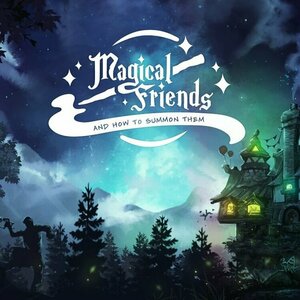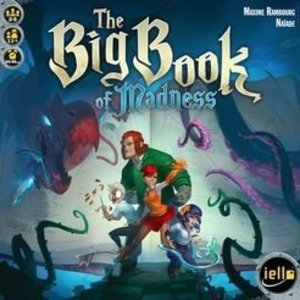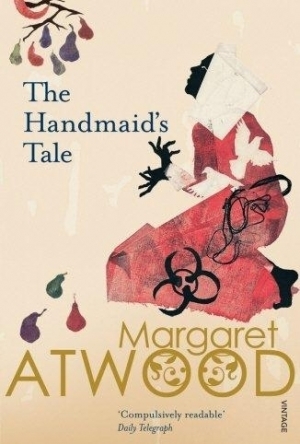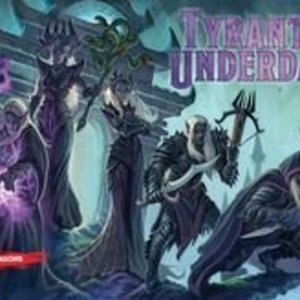Purple Phoenix Games (2266 KP) rated High Noon in Tabletop Games
Mar 1, 2021
Disclaimer: We were provided with a copy of the game for the purposes of this preview. This is a finalized production copy, and the components you see pictured are those you will receive in your own game! Also, we were provided the 4-player starter set – the game is playable with more people when expansions are included. -L
High Noon is a game of action points, grid movement, and fighting, played over a series of 12 rounds, in which players take on the roles of various posses in the Wild West who are battling to collect the most gold in town. To setup for the game, each player selects a posse and receives their corresponding deck of cards, character sheets, and minis. Character sheets are placed in front of each player, and a red Poker Chip is placed on each to track the Health of each character. Setup the map tiles as shown in the rulebook, or players may create their own map layout using at least 7 of the map tiles. Shuffle the Loot decks and place them to the side within reach of all players, and create a pool of Gold tokens and Poker Chips. The Loot Crate tokens are shuffled and randomly placed on the green squares of the board, and then players will take turns each placing 3 more Loot Crates following certain placement restrictions. All minis are placed on their starting squares on the map tiles, players draw 6 cards from their own posse decks, a starting player is selected, and the game is ready to begin!
Each turn is broken into 3 phases: Movement, Action, and Draw Cards. During the Movement phase, players may move any/all of their minis on the map up to the Speed value listed on their respective Character Sheets. Movement is always in straight lines, or can be diagonal. Diagonal movement costs 2 squares of movement though, so keep that in mind! The map tiles have various obstacles as well, and navigating over obstacles costs 2 squares of movement as well. After a player has moved their minis, they now move to the Action phase. In this phase, each individual character of your posse is allowed one action: Play a Card, Loot a Crate, Loot a Body, Equip an Item, Pass an Item, or Drop an Item. To Play a Card, select a card from your hand, perform the action listed on it (either an Attack or Special Action), and discard it. It is important to note that a character may only ‘Play a Card’ if you have one of their cards in your hand! Each posse deck is made up of action cards for the various posse members – so you might not always have a card in hand for every character. In order to Loot a Crate or Loot a Body, your mini must be in an adjacent square to the item to pick it up. Any Loot that is picked up is placed with the corresponding character’s Character Sheet – each character may only hold a specific amount of Loot! Certain Loot items need to be equipped, and thus you may make that character equip an item in lieu of any other actions this turn. Loot cards have various uses: Weapons, Consumables, or Ammunition. These can provide extra Attack damage, Healing powers, or Defense bonuses to characters. Loot is highly coveted!
Passing an Item allows you to hand off Loot between posse members, or Dropping an Item (a free action) removes that Loot from your Character and is discarded. After all of your characters have acted (if possible), your turn then moves to the Draw Cards phase. You will draw 3 cards from your posse deck. Once you have 12 cards in hand, you must discard 3 cards in order to draw 3 cards. You must always draw 3 cards at the end of your turn. The game then proceeds to the next player, and continues as such until the end of 12 rounds. So how do you win? By collecting Gold, of course! And the way to do that is by attacking your rival posses. Any time one of your characters deals at least 1 point of damage to an opponent, you collect 1 Gold token. Any time you kill an opposing character (reducing their Health on their Character Sheet to 0), you collect the amount of Gold listed on the deceased character’s Character Sheet. At the end of 12 rounds, the player/posse that has amassed the most Gold is the winner!
Ok, so I know that seems like a lot, but I promise that the gameplay is pretty streamlined once you actually get going. The Movement phase is very straightforward and simple to perform. The Action phase is logical, and the options are clear. Drawing cards is a no-brainer at the end of your turn. The real nitty-gritty part of play is in the strategy. You earn Gold by dealing damage or killing opponents, so naturally Combat is where the crux of the gameplay is centered. All characters are armed with weapons that have finite range. You may only ever attack opponents who are in direct Line-of-Sight – in a straight line away from you, or diagonally, each square costing 2 squares of range. If an opponent is not in either of those 2 directions from your character, you may not attack them! So movement and character placement becomes a lot more strategic and important in gameplay. There is also the concept of obstacles impeding the attacks of players. It makes logical sense, and I feel like the damage adjustments to incorporate obstacles feel realistic. When a player is attacked, they may choose to play a card from their hand to defend against some of the damage being dealt. As mentioned above, though, a character may only ever play a card that is specified for him! (Ex. Col. Rodgers cannot defend if you have no Col. Rodgers cards in hand) Are you willing to risk your only Leroy Gang card to defend 2 points of damage instead of using it to attack for 3 points of damage on your turn? You have to figure out exactly how to play the combat, and that strategy can turn in the blink of an eye.
Honestly, for me, the trickiest part of the gameplay was keeping track of which character acted each turn. I ended up grabbing some of the extra Poker Chips and placing them on a Character Sheet once he had acted each turn. Not necessarily a knock on the game, just on my inability to control multiple characters I guess! Let me touch on components for a minute. The copy of the game that I received is a finalized production copy. There may be some updates to the rulebook, but component-wise, what you see is what you get. And what you get is pretty great. The posse and Loot decks are nice sturdy cards, and the cardboard chits (Poker Chips, Loot tokens, and Gold) are thick, if not a little too small for my taste. The Character Sheets are big, easy to read, and clear in their iconography. The map tiles are some nice thick card stock-like material that definitely will hold up to numerous plays. And the minis. They are so cool! Each posse has a designated color, and they are just fun to play with and move around the board. At first, I found it difficult to tell certain posse members apart, since some of the minis look alike. But then I realized that each mini has a number of nicks in the base to help players identify which mini corresponds to which character. That was definitely a lifesaver for me in my plays. The components make this feel like a luxury game, and that helps make it more exciting to play!
So all in all, how does High Noon fare? In my opinion, pretty well! The map grid and combat are reminiscent of Dungeons and Dragons, but with a Wild West theme that feels novel and unique. And according to the box, it can be played with more than 4 players if you incorporate expansions into the base game. So you can really turn this into an all-out Western showdown! The gameplay is smooth, the strategy ever-changing, and the concept and rules are fairly simple to learn and teach. High Noon definitely gets some high marks from me!
Purple Phoenix Games (2266 KP) rated Magical Friends and How to Summon Them in Tabletop Games
Sep 29, 2021
Disclaimer: We were provided with a prototype copy of this game for the purposes of this preview. The components pictured are not finalized, and could change after a successful Kickstarter campaign. I do not intend to rehash the entire rulebook, but rather provide a general overview of the rules and gameplay. For more information, head to the Magical Friends website. -L
Magical Friends and How to Summon Them (referred to as just Magical Friends from hereon out) is a strategic game of card drafting and variable turn order in which players take on the roles of mages attempting to summon the most magical creatures to the local tavern in order to win the Midsummer festival competition. Played over 8 rounds, players will take turns summoning creatures, moving them towards the tavern, using special creature abilities, and occasionally fighting off your opponents’ creatures. The player who gets the most creatures to the tavern by the end of the 8th round is the winner! To setup for the game, lay out the main board and summoning board in the center of the table. Take the 4 double-sided map tiles, randomly choose a side, and place them in their corresponding places on the main board. Shuffle the Summoning cards and reveal a number of cards, determined by player count, to create a market row and preview row. Each player receives a player mat, heart tokens, and Artifact Cards in their chosen color. Place the round marker on Round 1 of the main board, select a player to get the starting player token, and the game is ready to begin!
To start a round, first you will need to determine turn order. Each player has an identical deck of 11 Artifact Cards, numbered 1-11. The player who offers the most powerful (highest number) Artifact gets to act first in the round. The player with the starting player token chooses their card first, and places it face-up on their player mat. The next player, in clockwise order, will do the same. Here’s the catch though – once a number has been played, it cannot be played by anyone else for this round! So say I put choose my value 8 card – no other player may choose that card for this round. Once all players have chosen their Artifacts, determine the turn order for the round. The player with the highest valued Artifact goes first, then the next highest, and so on.
Once the turn order has been determined, it is time for players to take their turns! On your turn, the first thing you will do is to select a Summoning card from the Summoning board and take it into their tableau. The selected card tells you which friend (creature) you have summoned, and tells you how many moves/what types of movement you may take this round. After choosing your Summoning card, you will take any/all of the following actions: Summon a friend (bring its standee into play), use basic movement (as determined by your new friend), use bonus movement (from other cards), or use the abilities of any friends in your tableau. You may perform as many of these actions as you want and are able to perform. It is important to note that each friend may only use one basic movement and one bonus movement per round. So you can’t just move a single friend with every movement available in one turn.
Once you are finished performing actions, you will end your turn. Refresh the Summoning board by shifting cards down and refilling any empty creature slots. Play then moves to the player with the next highest valued Artifact card. When all players have taken their turn, the round ends. Move the Round marker up one spot, and pass the starting player token to the next clockwise player. A new round will then start with the turn order determination, beginning with the new starting player. After 8 rounds of play, the winner is crowned. Players score points for the number of their friends who reached the tavern, and the player with the highest score wins!
I’ll come right out and say that I really have enjoyed Magical Friends. There are lots of elements that I like and that work well together to create a fun, strategic, and engaging game. First, turn order determination. I love that the turn order isn’t set for the entire game, because that could really be a detriment to whomever would be last every round. Being able to ‘bid’ for turn order, in a sense, allows players to be proactive (or conversely, reactive) with their strategy. And after you’ve used an Artifact card in a round, it is discarded and cannot be used for the rest of the game. So you need to decide when it’s worth it to play your high value cards to hopefully act first, or if you’re willing to risk playing a mid-value card that might be out-bid by an opponent.
The other awesome strategic element are the friends in the game. Each friend is a different creature with different movement options and special abilities during gameplay. An important thing to note is that although every friend has a printed movement value on its card, you may only ever use that value on the round in which you summon that friend. So a Griffin, for example, lets you move 3 friends 2 spaces, which you may do when you first summon the Griffin. But in future rounds, the Griffin will only move based on the movements provided by the most newly acquired friend. Maybe you don’t necessarily want to summon a Mermaid, but the movement she offers is exactly what you need to get some friends to the tavern for scoring. It’s all a neat mix of strategy that you are changing with every turn. Along with the movements, each friend has a special ability that can be used on your turns. Some abilities allow you to move extra spaces, move opponents, or even slay creatures. When you slay a creature, you collect its heart token for endgame scoring, and the player who controlled that creature gets a Pity Power card (which provide bonus movement). You need to decide when to move which friends, and in what order to trigger your abilities. You must always be paying attention to the board layout and your opponents’ turns as they will help you determine your strategy for future turns.
Components. As I mentioned earlier, this is a prototype version of the game, but with that said, the components are pretty nice! The cards are sturdy, the text is clear, and the artwork is fun to look at. The main game board and summoning boards are colorful, and the creature standees are nicely sized for the board. I do have to say that I really like the heart tokens used to identify to whom each creature belongs on the board. The hearts slide over top of the standee and create a base of sorts to color-code every creature on the board. Just a neat little use of components that make the gameplay smooth. And how about the insert? It’s awesome! The standees are all stored, assembled, in a slotted inlay that allows for quick selection of creatures. I hope that’s something that makes it to final production because it really helps streamline the gameplay. Some of the wording in the rulebook could use some clarification, but I know that it is still a work in progress and continues to undergo edits. The only negative I would have to say is that 2 of the player colors are black and gray – and they are sometimes difficult to differentiate between. But changing one color should be an easy fix!
All in all, I was pleasantly surprised by Magical Friends. At first glance, I thought it would be a pretty simple ‘roll-and-move’ type game, but it proved to be much more strategic and engaging than I initially thought. The variable turn order, the movement rules/restrictions, and the unique friend abilities all work together to create a cohesive, thematic, and strategic game. I very much am looking forward to following the progress of Magical Friends and How to Summon Them on Kickstarter, and I encourage you to check it out as well!
Solomon Wendt (30 KP) rated The Big Book of Madness in Tabletop Games
May 5, 2019
The game mechanics feature deck building, spell casting, cooperation, and some randomization of spells available and monsters to defeat. There are schools of magic related to the four elements; air, earth, fire, and water. Each element has two magician students that specializes in that element for a total of 8 different characters, each with their own special ability. There are four decks of spells, again related to the elements, that is randomized during set up, changing what spells are available game to game. Similarly, the monsters you must face are randomized, so the chance of having the same exact game as another is rare. The gameplay remains consistent, though.
Over the course of 6 rounds, players work together to defeat monsters. It is a pure cooperation game. No one has any secret objective and should communicate with other players. Games of this fashion, such as Pandemic, tend to end up having one or two people make all the decisions for the group. It my many plays of the game, I have only had that happen once or twice. The variation in spells, magicians, and elements usually make a player uniquely helpful to the group, allowing players to choose how they want to build their character. Although each magician has an elemental alignment, you can choose to focus on different elements and spells and are not limited to one type of role. Each element of magic has a different role to deal the challenges players face, meaning a good balance can be very beneficial. However, due to the randomization, it is possible either the spells or the monsters leave one of the elements non-essential, but that is fairly uncommon.
Overall, the game is very enjoyable and can be played multiple times with different variations. The difficulty can be adjusted if ot feels it is too hard or easy. My group that plays about once a week are clearing the 2nd difficulty 50% of the time and haven't cleared it with a variation yet. It can be a challenge and has elements of luck and strategy. It is a fun game to play with friends, especially because it is cooperative, and I would recommend adding it to your collection.
The game is 2-5 players and runs 60-90 minutes. It is family friendly and a great game for those who love magic fandoms such as Harry Potter.
Nadya R (9 KP) rated The Handmaid's Tale in Books
Jul 2, 2018
Strange book.
I really wanted to like it and I kinda do.
Its way too biblical for me. With all these references to different Books connected with the Bible - the Bible stories are not really my thing. Yeah, I know that this is the point - the Religious takes over the world. But the author brings it too far than needed.
The story doesn’t have any logical order. It sounds like a diary of somebody who lost their common sense. All this illogical sentences. Like a flashes of memory in between the current situation. Lack of direct speech - there is no distinction between the narrator and the different characters. It’s so senseless in some points that I have to go back and to read the past couple of pages all over again so I can get the line out.
It's is situated in not-so-far future and it’s told by a woman with no name. All women are named after the family who owns them. In this case our narrator is OfFred - owned by a commander Fred’s family. The new government, that had risen, is proclaiming no rights for the women. Their only purpose is to give birth to a healthy babies. They don’t need money, jobs, books, pens or other things that we are taking for granted in our lives. They don’t need them to deliver babies, so they don’t need them at all.
"Tell, rather than write, because I have nothing to write with and writing is in any case forbidden.
But if it's a story, even in my head.
I must be telling it to someone. You don't tell a story only to yourself. There's always someone else.
Even when there is no one."
The Republic of Gilead, as I said, uses religion to control their lives. Every atrocity they do is justified by the Bible. The Bible has all the answers.
The story line is going around OfFred’s inner fights, her struggle to make the right choices, her dreams to be free again and to be with her child and her husband again. Along with her thoughts she shows us what is like to be a Handmaid. Her daily routine, the Rituals and all these small things that distract her from the reality.
"You can only be jealous of someone who has something you think you ought to have yourself"
Personaly, I don’t like the book that much. It’s senseless and not that easy to read. Not because of the topic, but the way it’s written. The shortage of direct speech took away the movement of the book. I know it should look like a diary, but even in the diaries, the difference between the narrator and others is shown in proper way. Probably I will need a second read to fully understand it. But for now the book left a big mess in my head.
"A man is just a woman's strategy for making other women."
Russell Evans (179 KP) rated Tyrants of the Underdark in Tabletop Games
Feb 24, 2020 (Updated Feb 24, 2020)
A brief overview of the Game
Each player controls a Drow house in the Underdark, competing to take control by getting the most Victory Points at the end of the game. Victory points are gained from various sources, for example, controlling locations on the board, assassinating your rivals troops, card abilities, cards owned in your deck or promoted.
Each turn the player draws cards from their own deck that determine what they can do in their turn. There are several different strategies you can pursue to try and win – subterfuge, violence, using spies, gathering a powerful deck etc. You can use influence that you gain in the game to buy new cards from the communal market to expand your deck and buy new minions with a range of different abilities. Random card drawers in the market can be frustrating when your opponents get the card you want straight after your turn, but that’s the nature of the game. Some of the cards can seem super–powered but there are several of these, so we find it balances out overall.
The promotion mechanic is rather interesting - it gives you the dilemma of promoting a card to gain increased victory points but means that the card (and its abilities) aren’t available for you to use for rest of the game. Do you hang on to it a bit longer to use that awesome ability and risk the game ending before you can promote that card for loads more victory points?
There are 4 decks included in the base game; Drow, Dragons, Elementals and Demons and they all play very differently. You use a mix of 2 decks each game, so that adds a bit of variety and re-playability. (Add in the 2 from the expansion for a bit more – Aberrations and Undead.)
Also worth mentioning; the artwork on the cards is nice and the board is good too.
I think Tyrants of the Underdark is a very enjoyable game and it gets a solid 9/10. I just wish there were some more expansions for it.
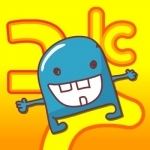
Hebrew Touch and Write
Education and Entertainment
App
"My son loves Touch and Write - Fantastic app and the customising options are great!" "Love, love,...
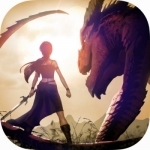
War Dragons
Games and Entertainment
App
War Dragons is a visually stunning 3D real-time strategy game that puts you in control of the...

Survival Arena™ TD
Games and Stickers
App
Build and customize your arsenal of deadly towers, ammunition, and power-ups until other players...

Gods and Glory: Throne wars
Games and Stickers
App
Throw yourself into intense and tactical real-time fantasy PvP strategy. Clash with warriors...

Overkill 3
Games and Entertainment
App
8 environments with more than 60 battlefields, 4 game modes and over 30 guns to shoot your way...

